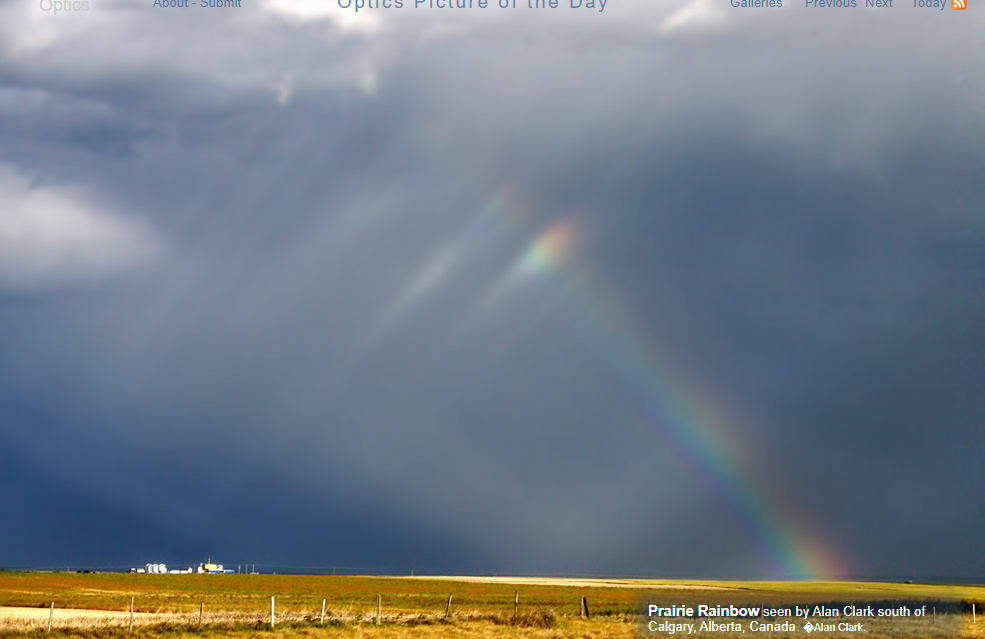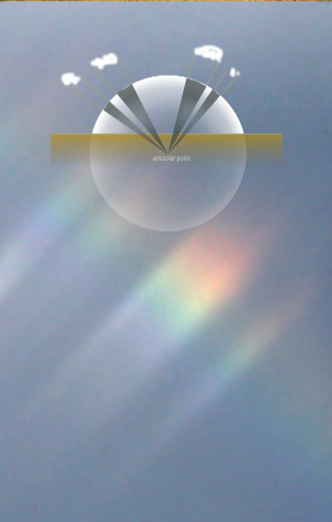Rainbow Spikes
Rainbow Spikes: A Captivating Atmospheric Phenomenon
Rainbows are a breathtaking display of nature's beauty, but have you ever heard of rainbow spikes? These fascinating optical phenomena occur when sections of a rainbow appear and disappear as both the storm and the observer move, aligning different portions of rain clouds to create the perfect conditions for rainbows to form. Unlike the traditional arc-shaped rainbow, rainbow spikes exhibit intriguing patterns that resemble a cartwheel, with bright and dark regions that add to their allure.
The appearance of rainbow spikes is reminiscent of the ever-changing auroras, albeit at a slower pace and with distinct characteristics. One notable feature is the extensive presence of brighter regions, which are considered the "normal" appearance of the rainbow. Conversely, the dark regions represent the intruders on this typical rainbow formation. This interplay of light and shadow adds depth and complexity to the overall spectacle.
The rays observed in rainbow spikes are actually parallel beams of sunlight that illuminate specific sections of the rainbow cone. Although they appear to converge towards the antisolar point, it is a perspective trick caused by our vantage point. These rays behave similarly to anti-crepuscular rays, marking the path where raindrops refract and reflect light towards the observer's eye. It is through this intricate interplay of light, water droplets, and atmospheric conditions that rainbow spikes come to life.
To better understand this phenomenon, let's delve into some key points about rainbow spikes:
-
Cause: Rainbow spikes occur when sunlight passes through raindrops in the air, causing refraction and reflection. The angle at which the light enters and exits the raindrop determines the bending of light, leading to the separation of colors and the formation of a rainbow.
-
Weather Conditions: Rainbow spikes are more likely to be observed during or after a rain shower when there are still raindrops in the air. Additionally, the presence of a storm or thunderstorm can enhance the formation of rainbow spikes due to the unique atmospheric conditions.
-
Movement and Alignment: The ever-changing nature of rainbow spikes is a result of the movement of both the storm and the observer. As they shift positions, different portions of the rain clouds align to create the necessary conditions for rainbows to appear. This dynamic interplay adds an element of unpredictability and excitement to the phenomenon.
-
Cartwheel Patterns: Unlike the traditional arc-shaped rainbow, rainbow spikes exhibit captivating cartwheel patterns. These patterns are formed by localized sections of the cloud that produce rays within the region, resulting in intricate and mesmerizing designs.
-
Auroral Similarities: The changing appearance of rainbow spikes, reminiscent of auroral changes, adds an element of wonder to the phenomenon. While auroras are known for their rapid and ephemeral nature, rainbow spikes offer a more prolonged and vivid display, with distinct color bands that create a mesmerizing visual experience.
-
Brightness and Color Bands: Of particular interest in rainbow spikes is the extent of the brighter regions. These regions, considered the "normal" appearance of the rainbow, contribute to its overall brightness and vibrancy. The dark regions, on the other hand, serve as intriguing intrusions, adding contrast and depth to the phenomenon.
Rainbow spikes are a captivating atmospheric optical phenomenon that showcases the wonders of nature. They provide a unique perspective on rainbows, offering a mesmerizing display of cartwheel patterns and an interplay of bright and dark regions. Understanding the causes and conditions that contribute to the formation of rainbow spikes allows us to appreciate their beauty even more. So, keep an eye out for these enchanting phenomena during or after rain showers, and let yourself be captivated by the magic of rainbow spikes.

Prairie Rainbow seen by Alan Clark south of Calgary, Alberta, Canada. �Alan Clark.

"We were driving alongside a large and developing thunderstorm in the early evening when sections of a rainbow appeared and disappeared as both the storm and ourselves moved to place different portions of the rain clouds in the correct position for rainbows to appear.
Local sections of the cloud produced rays within this region to produce these interesting patterns. The changing appearance of this spectacular cartwheel pattern was reminiscent of auroral changes, though less rapid and ephemeral and of course, much brighter and with different colour bands. Of particular interest is the extent of the brighter regions, though these are the "normal" appearance, with the dark regions being the intruders on the normal rainbow."
The 'rays' are regions where bright sunlight is illuminating part of the rainbow cone. They are actually parallel beams but perspective makes them appear to converge towards the antisolar point.
They behave like anti-crepuscular rays. They mark the path where raindrops are refracting and reflecting light towards the eye.
Note: this article has been automatically converted from the old site and may not appear as intended. You can find the original article here.
Reference Atmospheric Optics
If you use any of the definitions, information, or data presented on Atmospheric Optics, please copy the link or reference below to properly credit us as the reference source. Thank you!
-
<a href="https://atoptics.co.uk/blog/rainbow-spikes/">Rainbow Spikes</a>
-
"Rainbow Spikes". Atmospheric Optics. Accessed on November 26, 2024. https://atoptics.co.uk/blog/rainbow-spikes/.
-
"Rainbow Spikes". Atmospheric Optics, https://atoptics.co.uk/blog/rainbow-spikes/. Accessed 26 November, 2024
-
Rainbow Spikes. Atmospheric Optics. Retrieved from https://atoptics.co.uk/blog/rainbow-spikes/.